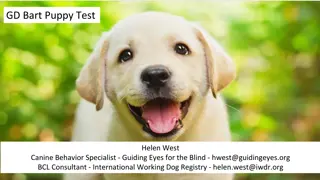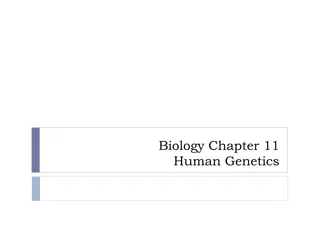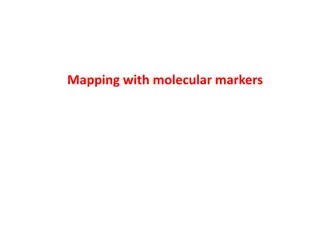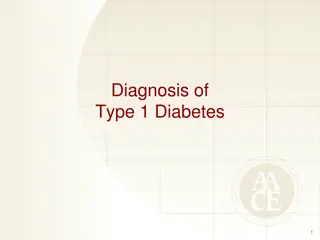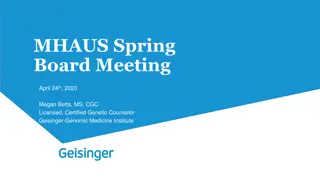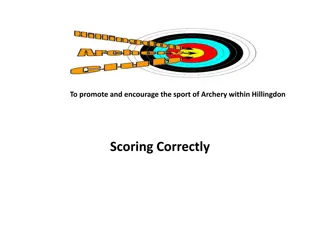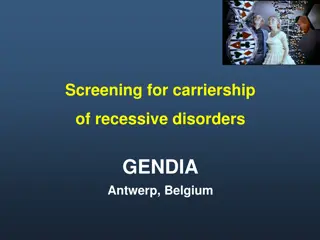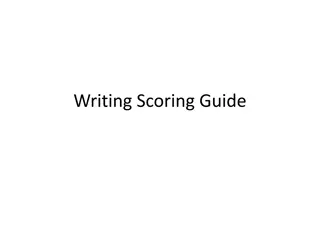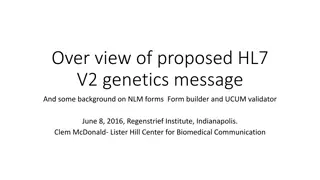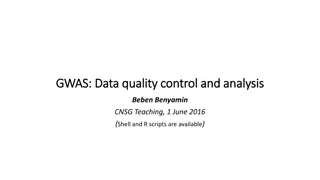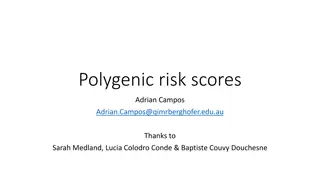Polygenic Risk Scoring in Genetic Diseases
Exploring the concept of polygenic risk scoring, which involves combining risk alleles from multiple genetic variants to assess disease predisposition. Learn about building polygenic scores, potential applications, and challenges in genetic research.
Download Presentation

Please find below an Image/Link to download the presentation.
The content on the website is provided AS IS for your information and personal use only. It may not be sold, licensed, or shared on other websites without obtaining consent from the author.If you encounter any issues during the download, it is possible that the publisher has removed the file from their server.
You are allowed to download the files provided on this website for personal or commercial use, subject to the condition that they are used lawfully. All files are the property of their respective owners.
The content on the website is provided AS IS for your information and personal use only. It may not be sold, licensed, or shared on other websites without obtaining consent from the author.
E N D
Presentation Transcript
Polygenic risk scoring Frank Dudbridge London School of Hygiene and Tropical Medicine October 2015
Classes of genetic disease Monogenic Clear phenotype Mendelian Oligogenic Variable phenotype Genetic heterogeneity Polygenic continuous phenotype Complex traits Multifactorial extensive heterogeneity Janssens A. and van Duijn C, Hum Mol Genet 2008 Figure 3. Complete cause models or sufficient causes of disease development. Complete causal models for (A) Huntington Disease; (B) Phenylketonuria; (C F) Hypothetical examples for complex diseases. White areas refer to genetic factors and grey areas to environmental factors.
Common diseases are polygenic Type 1 Diab Ank Spol Platelet Height MS Crohn's BMD Schiz GWAS explained vWf Unexplained heritability Bipolar Type 2 Diab Qti BMI U Colitis HDL Breast Ca 0 0.2 0.4 0.6 0.8 1
Polygenic scores The idea of a polygenic score is to combine all the risk due to thousands of variants with small effects into a single gene score This score can be used in a number of ways, as we shall see In its simplest form, a polygenic score for an individual is the total number of risk-increasing alleles carried by that person
Acronyms, synonyms PRS Polygenic risk score GPRS Genomic profile risk score PGS Polygenic score GRS Genetic risk score Gene score Genetic score Genotypic score Allele score Profile score Linear predictor
Polygenic scores We build a gene score by summing the risk alleles across many SNPs Ideally, weighted by their true effect sizes Ideally, including all the SNPs affecting the trait, and no other SNPs S = ix i i Departure from these ideals creates options in building scores The polygenic score accesses more heritability than individually associated SNPs
Building polygenic scores i = S ix i We do not know the true effect sizes of SNPs Estimate effect sizes from The data at hand External data, eg consortium data More precise, but more heterogeneous +1 for risk increasing, -1 for risk decreasing: unweighted score We do not know all the SNPs affecting the trait Could include Genomewide significant SNPs Nominally significant SNPs (P<0.05) All the SNPs
Polygenic scores SNPs Trait 1 Subjects ~ Training sample 1, 2, 3, ..., ,..., m sort Selected SNPs Score Trait 2 P(1) P(2) P(3) ... PT ... P(m) (1) (2) (3) ... select Subjects Target sample ~ =
Example Log odds ratios from previous GWAS 0.5 0.2 0.6 0.3 0.9 0.7 0.4 SNP1 SNP2 SNP3 SNP4 SNP5 SNP6 SNP7 Case1 0 2 1 2 0 0 1 Case2 2 2 1 2 0 2 1 Control1 0 1 1 0 2 1 2 Control2 1 1 2 1 1 2 1 Score Case1 0 0.5+ 2 0.2+ 1 0.6+ 2 0.3+ 0 0.9+ 0 0.7+ 1 0.4= 2.0 Case2 2 0.5+ 2 0.2+ 1 0.6+ 2 0.3+ 0 0.9+ 2 0.7+ 1 0.4= 4.4 Control1 0 0.5+ 1 0.2+ 1 0.6+ 0 0.3+ 2 0.9+ 1 0.7+ 2 0.4= 4.3 Control2 1 0.5+ 1 0.2+ 2 0.6+ 1 0.3+ 1 0.9+ 2 0.7+ 1 0.4= 4.7
More synonyms Discovery = Training Replication = Target But we did not necessarily discover anything...
PRS (profile scoring) in PLINK Reduce the SNPs to a set in approximate LD Best done using clumping : keep the most associated SNP, remove those in LD with it, then keep the next most associated remaining SNP, etc Recommend LD threshold of r2<0.1 plink --clump-p1 1 --clump-p2 1 --clump-r2 0.1 --clump-kb 500 Estimate effect sizes of these SNPs plink --assoc
PRS (profile scoring) in PLINK Create a file listing SNPs and their effect sizes Take logs of odds ratios awk Create a file listing p-value thresholds to select SNPs into PRS Generate PRS for subjects in the target sample plink --score --q-score-range Regress target phenotype against PRS glm(y~prs, family=binomial)
PRSice R package to simplify calculations of PRS http://prsice.info Jack Euesden talk on Saturday
Uses of polygenic scores Evidence for a polygenic signal Evidence for a shared genetic basis Patient stratification and sub-phenotyping Individual risk prediction Mendelian randomisation Estimating the genetic architecture of a trait NB for each of these applications, there are potentially better methods available PRS is relative simple and generally works well enough A new field of polygenic epidemiology
Find evidence of a polygenic signal Train the score on one sample Test for association with the same trait in a second sample This test should only be significant if there are many associated SNPs within the score
First example schizophrenia Purcell noticed that the genomic control remained above 1 despite very rigorous QC Argued that this was due to many small, non-null effects polygenic effects The argument since affirmed by theory
First example schizophrenia Training Target
Shared genetic basis between traits Train the score on one sample Test association with a different trait in a second sample This test should only be significant if many SNPs affecting the first trait also affect the second
Patient stratification and sub-phenotyping Subtypes of disease correlate with polygenic score Schizophrenia PRS distinguished schizoaffective bipolar cases from other bipolar cases Did not distinguish psychotic bipolar from other cases
Thanks More applications, and theory, on Saturday


